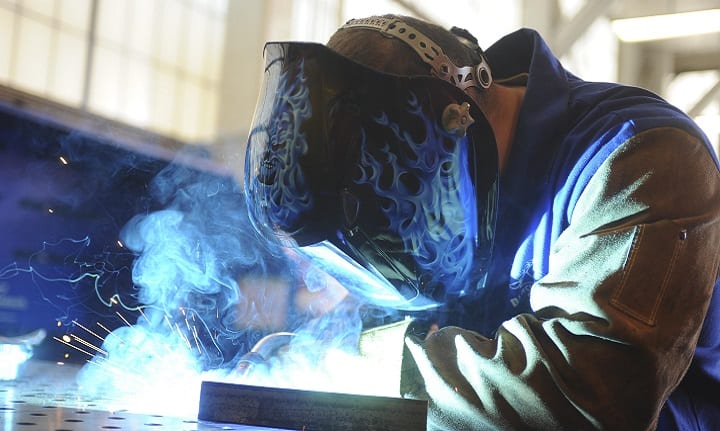
Safety Tips for Cutting Steel
 Cutting steel can be dangerous work. Depending on the type of tools you’re using, your work environment, and how much attention your company pays to OHS requirements, you need to know how to do your job safely.
Cutting steel can be dangerous work. Depending on the type of tools you’re using, your work environment, and how much attention your company pays to OHS requirements, you need to know how to do your job safely.
Steel cutting – Safety Basics
The days when steel cutting was risky are long gone. Since the old days, rules and regulations have saved people from serious injuries and even death.
The basic principles of safety are:
- Always stay clear of operating machinery. Do not wear loose clothes, or get too close to moving cutting machinery.
- DO NOT attempt to remove material from an operating machine. The machine must be stopped and proper safety precautions are taken before removing material from the machine.
- You must wear protective gear at all times when cutting steel. Steel splinters, “shrapnel” from cutting processes, and other debris can be extremely dangerous.
- Safety goggles protect you from splinters, which can do an almost unthinkable amount of damage if they hit your eyes or face. Simply DO NOT operate the machinery without your goggles.
- Safety gloves also protect from metal shards, but also protect your hands against temperatures which can be very high during the cutting process. Hot metal can cause serious burns.
- Coveralls and other safety clothing are also mandatory. This clothing is heavy duty fabric, designed to protect against impacts from sharp objects like steel splinters.
Safety and OHS
Just about all steel cutting machinery has standard OHS procedures.
- You should be fully trained in these procedures before operating this machinery. Failure to comply with OHS regulations may be
a breach of industrial safety laws and grounds for civil legal action if injuries occur.
- Trainee operators should be supervised at all times and should not be operating equipment for which they have not been adequately trained and certified. Please note that the highest risk is typically associated with training accidents. Employers should also ensure that trainees are thoroughly familiar with equipment before operating.
- Machine safety should always be checked. A machine which is not operating properly is by default considered unsafe. If you’re unsure whether the machine is operating properly, report to your supervisor or manager.
- Cutting blade action should be consistent and perform properly. If the blade is stopping and starting, there’s something wrong with the machine. Any machine which is not performing according to specifications should not be used.
Need Steel Fabrication Services in Western Australia?
Trufab Engineering is your full-service steel fabrication company in Western Australia. If you’d like to enquire about our services, give us a
call on 08 9455 1377 and speak directly to our experts about Trufab metal fabrication services, 3D CAD modelling, and structural steel fabrication services. If you prefer, you can contact us online and leave a message. We’ll be in touch with you ASAP.
Please note:
Information provided in this article is intended as a guide only. It is critically important to ensure that OHS procedures are followed at all
times when cutting steel. If you’re unsure about these procedures, ask your supervisor or trainer.
